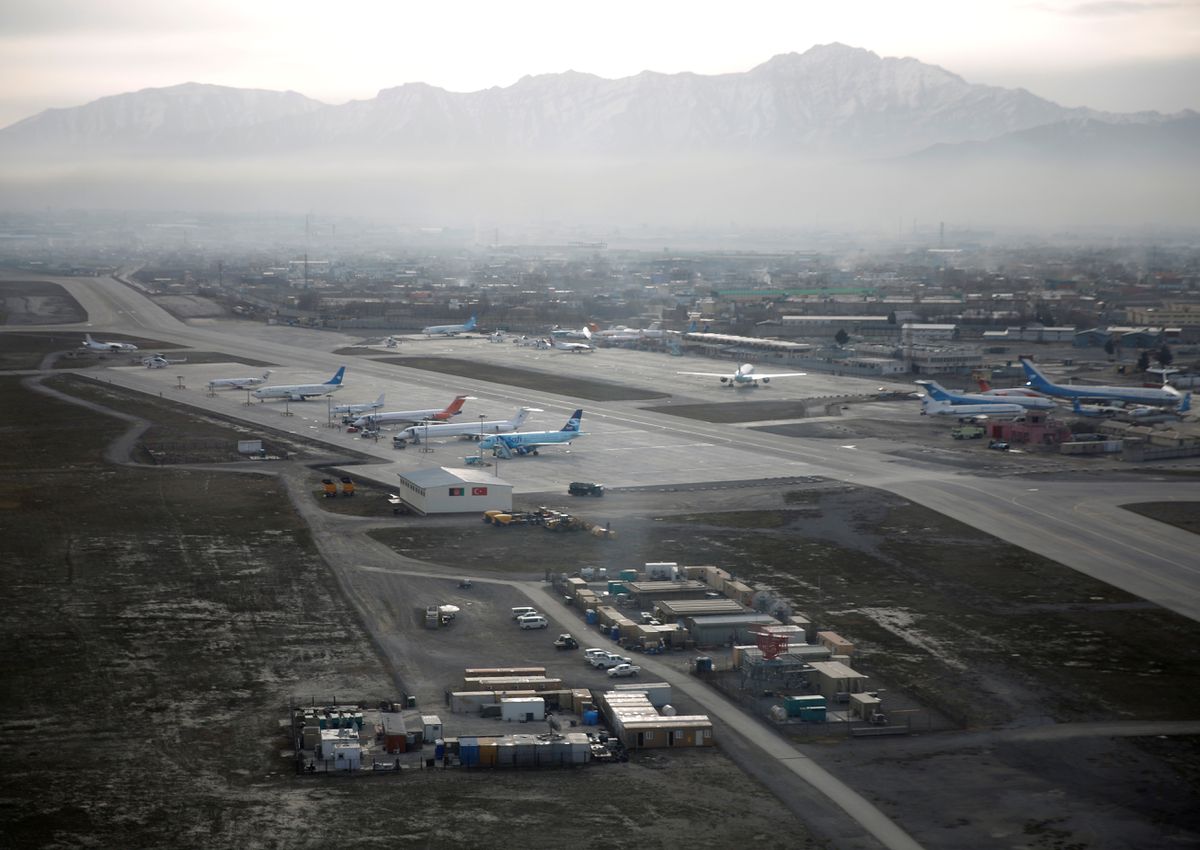The Daily Escape:

Sunset, Mt. Hood, OR – August 2021 photo by CampsG. Note the haze from wildfires.
Biden’s effort to reframe the Afghanistan conversation to a decision-to-withdraw narrative rather than an execution-of-the-withdrawal narrative – at least for now – hasn’t controlled the narrative. But it’s still early days of media spinning about our failure in Afghanistan.
Kevin Drum reminds us:
“Withdrawing from Afghanistan was always going to be a bloody, chaotic affair no matter what. That’s why no one wanted to do it: It was pretty obvious how it would go down, and no one with any sense wants that as part of their presidential legacy. But the bloodshed was inevitable once the decision to leave was made.”
But are the events of the past few days horrific? Maybe you should re-think that – they haven’t been. Remembering how the Taliban operated when they were in control in the 1990s, we should have expected much worse. The Taliban’s takeover has been far smoother and less vicious than at least Wrongo expected.
That isn’t a pro-Taliban comment. But maybe 20 years of being hit by US bombs and drone attacks has moderated them, at least temporarily. Things could change rapidly. And the chaos we’re seeing, and that the media are complaining about, is simply what happens when a military must withdraw under armed pressure.
A harsh truth is that any US evacuation from Kabul airport requires the concurrence of the Taliban. The US controls the military side of the one runway airport. Here’s what the Kabul airport looks like:

The plan, as articulated by the Biden administration, is that evacuations will continue at least until August 31 at roughly 5000 a day, or 70,000 people in total by then. That of course, depends on the continued cooperation of the Taliban.
This once again calls into question the competence of the US military’s contingency planning. We have a supposed agreement with the Taliban that allows the US to continue to control the airspace and the Taliban to cooperate in allowing foreigners and Afghans who want to depart, safe passage to the airport.
Again, we should question General Milley’s decision to shut down Bagram airbase in July, apparently without ensuring Kabul would be defensible in a worst-case scenario. As Wrongo stated, Bagram is more easily defended and has longer runways and greater capacity than Kabul. Planning of this type is Milley’s job. Early indications so far are that it wasn’t done competently.
Think about how we plan to evacuate our ± 5,000 soldiers protecting the Kabul airport once all of the people we’re trying to evacuate leave. Who protects their exit? Has Milley planned for that?
Let’s look at some curious facts about the Afghanistan end game. Since 2014, the US has provided about 75% of the $6 billion annually needed to fund the Afghan National Security Forces while the remainder of the tab was picked up by US partner nations and the Afghan government.
However, for fiscal year 2021, the US Congress appropriated only $3 billion for Afghanistan’s fighting forces, the lowest amount since 2008. Remember that the fiscal year started on October 1, 2020. This diminution of US support came after Afghan President Ashraf Ghani said his government cannot support its army for even six months without US financial aid. This practically guaranteed that the front-line Afghan troops wouldn’t be paid. What was the Trump administration thinking?
Link that to comments by Afghanistan’s Central Bank head, Ajmal Ahmady, who said that the country’s supply of physical US dollars is “close to zero.” Afghanistan has some $9 billion in reserves, mostly held outside the country, with some $7 billion held in the US. These funds are now frozen.
Ahmady said the country did not receive a planned cash shipment last week. From the NYT:
“On Friday, the central banker received a call saying the country wouldn’t get further shipments of US dollars, though the next one was supposed to arrive on Sunday. The next shipment never arrived…Seems like our partners had good intelligence as to what was going to happen.”
Facts don’t lie: the US believed things were heading south and didn’t send the usual cash infusion. So, the administration can’t say they were completely surprised by the speed of the Taliban takeover, somebody high up had figured it out.
A key question that politicians and the media are asking is: “When did we know that the government would fall?” Some would say they knew it from the early days of the war. This from Laura Jedeed:
“I remember Afghanistan well. I deployed there twice — once in 2008, and again in 2009–2010. It was already obvious that the Taliban would sweep through the very instant we left. And here we are today.”
There are many, many military who deployed there who share that view.
For Wrongo, it was clear in 2020 when Trump and Pompeo negotiated a deal with the Taliban, without the Afghan government in the room. That insured that their government would fall.
The military loss of Afghanistan isn’t the end of the world. It’s awful, but there’s a difference. So everyone should calm down. Afghanistan is gone. We’re out of there, and the Taliban are back.
But stop the anger. That’s only a reflex. Think about what country this describes:
“A fractious country comprised of warring tribes, unable to form an inclusive whole; unable to wade beyond shallow differences in sect and identity in order to provide for the common defense, promote the general welfare, and secure the blessings of liberty to themselves and their posterity, and so they perish—in the span of a breath—without ever reaching the promised shore.”
Today, it describes Afghanistan. Tomorrow, is it us?
